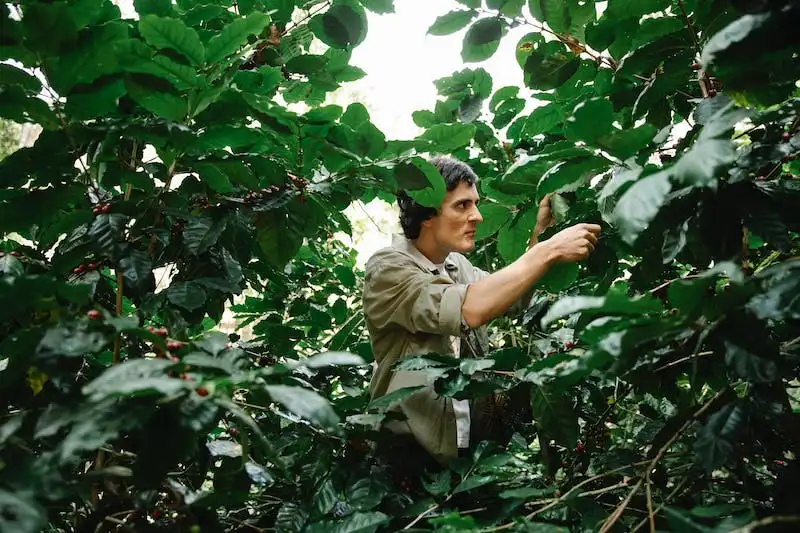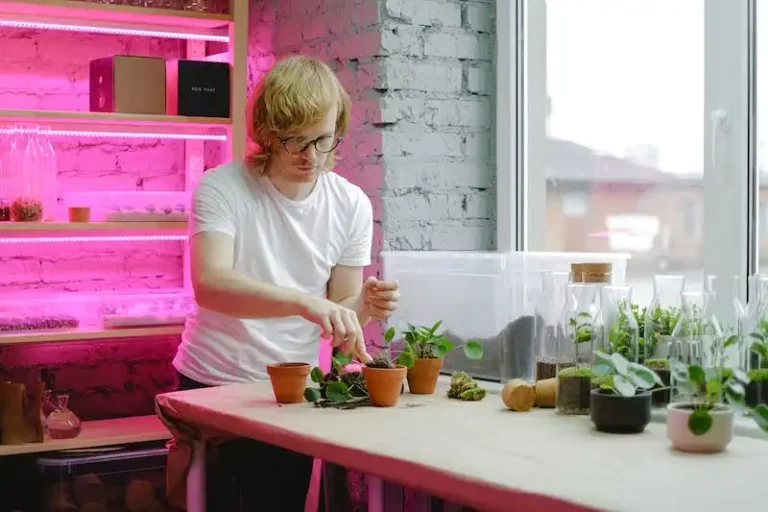Tomatillos are small green or purple fruits that are also known as husk tomatoes. They are native to America and have been cultivated for centuries. The seeds of a tomatillo are small and round, measuring about 1/8 inch in diameter. To grow tomatillos, you will need to start them from seed. The seeds should mature in about 7 to 10 days.
When it comes to growing tomatillos, there are a few mistakes that many growers make. One common mistake is not storing the seeds properly. Tomatillo seeds can lose viability quickly if they are not stored correctly. To ensure successful germination, it is best to store the seeds in a cool and dry place, away from direct sunlight. Another mistake is starting the seeds too late in the season. Tomatillos are warm-season crops and require a long growing period to mature.
If you’re not sure where to start with growing tomatillos, a good guide is to include them in your kitchen garden. They are easy to grow and can be used in a variety of recipes, including salsas and sauces. Tomatillos are also known for their storage life. They can be stored for several months without any loss of flavor or quality.
When planting tomatillo plants, it is important to give them enough space to grow. They require a minimum spacing of 3 to 5 feet apart. Tomatillos have a spreading habit, so leaving too little space between plants can result in overcrowding and poor growth. To support the plants, it is recommended to stake them as they grow. This will help prevent breakage and allow for better air circulation.
Tomatillos are generally very tolerant of pests and diseases. However, there are some common problems that can occur. One such problem is cutworms, which are insects that feed on the stems of young plants. To prevent cutworm damage, a solution is to place a collar or barrier around the base of each plant. Another issue is blight, which can affect both the leaves and the fruit of the plant. To manage blight, it is important to practice good sanitation and remove any infected plant material.
In conclusion, tomatillos and husk tomatoes are versatile and easy-to-grow plants that can add a unique flavor to your kitchen garden. With proper care and management, you can enjoy a bountiful harvest of these delicious fruits. Whether you use them in salsas, sauces, or eat them fresh, tomatillos are a special addition to any garden.
From Seed to Harvest: A Guide to Growing Tomatillos
Growing tomatillos, also known as ixocarpa, is a great addition to any garden. These small vegetables are a part of the Solanaceae family and are native to Central American countries. With their tangy flavor and versatile uses, tomatillos seem to have it all!
Before planting tomatillos, there are a few things you should know to avoid common mistakes. Tomatillos are relatively tolerant to many conditions, but overwatering is something to watch out for. They don’t like to be watered too much, so make sure to provide them with proper drainage.
If you start your tomatillo seeds indoors, you can transplant them outdoors once they reach about 4 inches tall. Tomatillos need a long growing cycle, taking around 70 to 100 days from seed to harvest. It is best to plant them in an area with full sun, as they require at least 6 hours of sunlight per day.
When planting tomatillos, give them enough space to grow and consider using a trellis for support. These plants tend to vine and can become quite tall, so providing a trellis will help with their growth. Additionally, tomatillos are not self-pollinating, so having multiple plants will increase your chances of a successful harvest.
Tomatillos have unique characteristics that distinguish them from other vegetable plants. Their fruit has a husk on the outside, which turns from green to brown as they mature. The edible part of tomatillos is the fruit itself, which is green and firm. Harvesting tomatillos can be done by gently removing the husk, leaving you with the delicious green fruit.
Tomatillos are relatively pest and disease-tolerant, but they can still encounter some issues. Common pests that might affect your tomatillo plants include aphids and tomato hornworms. Diseases such as blight can also be a problem, so regularly inspect your plants for any signs of trouble.
When it comes to watering tomatillos, it is important to strike a balance. They should be watered regularly, but avoid overwatering as it may lead to root rot. Aim to keep the soil moist but not waterlogged.
Harvesting tomatillos is a rewarding experience. The fruit is typically ready to be picked when it fills out the husk completely and turns a bright green color. Gently twist the fruit off the plant, taking care not to damage the stem or surrounding branches. Tomatillos can be used in a variety of dishes, from salsas and sauces to soups and stews.
Growing your own tomatillos is a fun and attainable goal for any gardener. With proper care, you can enjoy a bountiful harvest of these tangy and versatile fruits. Whether you’re processing or eating them fresh, tomatillos are sure to add a touch of flavor to your meals.
To plant
Tomatillos, also known as Husk Tomatoes, are relatively easy to grow. They can be grown in containers or directly in the garden. When planting tomatillos, it is important to choose a site with full sun, at least 8 hours per day. Tomatillos prefer well-drained soil with a pH between 5.5 and 7.5.
Tomatillo plants can be started indoors about 6-8 weeks before the last frost date. The seeds should be planted about ¼ inch deep in small containers or seed trays. Once the seedlings have reached about 4-6 inches in height and have developed their first true leaves, they can be transplanted into the garden.
When transplanting, it is recommended to space the tomatillo plants at least 3 feet apart, as they can grow quite large. If you are growing multiple varieties, be sure to leave enough space between plants to prevent cross-pollination.
Tomatillos have a relatively long growing season, typically around 70-80 days from planting to maturity. They are heavy feeders and require sufficient nutrients, especially nitrogen and phosphorous. It is recommended to amend the soil with compost or well-rotted manure before planting.
It is also important to provide support for the tomatillo plants, as they tend to grow tall and can become top-heavy. A trellis or stakes can be used to help support the plants and prevent them from falling over.
In terms of pests, tomatillos are relatively resistant to common garden pests. However, they can be susceptible to cutworms and aphids. To prevent cutworms from damaging the plants, you can place a collar around the base of each plant. Aphids can be controlled by spraying the plants with a mixture of water and dish soap.
The tomatillo fruits are ready for harvest when they have filled out the husk and the husk has turned brown and papery. Simply pull the fruits from the plant and remove the husks. The tomatillos can be used fresh in salsas, or they can be pureed and stored for later use.
In conclusion, tomatillos are a versatile and relatively easy plant to grow in the home garden. With proper care and management, a bountiful harvest of these small, green fruits is attainable.
To grow
When growing tomatillos and husk tomatoes, there are a few key factors to keep in mind to ensure a successful harvest. Here are some tips:
- Start by choosing a suitable variety. Tomatillos and husk tomatoes come in different sizes and colors, so select a variety that suits your preferences and growing conditions.
- Plant the seeds indoors, about 6-8 weeks before the last frost date. Sow the seeds in a seed tray or small pots, and keep them in a warm, sunny location.
- Transplant the seedlings outdoors after the danger of frost has passed. Choose a location that receives full sun and has well-draining soil.
- When planting, space the plants about 2-3 feet apart to allow ample room for growth.
- Water the plants regularly, but be careful not to overwater. Tomatillos and husk tomatoes are susceptible to bacterial diseases, so it’s important to avoid excessive moisture.
- As the plants grow, support them with stakes or cages to keep them upright.
- Check the plants regularly for pests and diseases. Common problems include pests like aphids and diseases like blight. If you notice any issues, take appropriate steps to treat them.
- Harvest the tomatillos and husk tomatoes when they are fully ripe. The husks will turn brown and papery, and the fruit inside should be firm but not hard.
- To harvest, gently twist or break the husk off the fruit. If the fruit is difficult to remove from the husk, it may not be fully mature yet, so wait a bit longer before harvesting.
- Tomatillos and husk tomatoes can be stored for a short period at room temperature. If you want to prolong their shelf life, store them in the refrigerator.
- If you want to save seeds from your tomatillos and husk tomatoes, select a healthy and fully ripe fruit. Scoop out the seeds, clean them, and let them dry completely before storing for future use.
- Remember to rotate your crops to prevent disease and nutrient deficiency. Avoid planting tomatillos and husk tomatoes in the same spot each year.
- Overall, tomatillos and husk tomatoes are relatively easy to grow in the garden. With proper care and attention, you can enjoy a bountiful harvest of these delicious and unique vegetables.
To harvest
Tomatillos, also known as husk tomatoes (Physalis ixocarpa), are commonly grown in the kitchen garden. They are a long-season crop that requires a wide variety of considerations to be taken into account. For example, tomatillos require a trellis or other support structure to help them attainable. They have a long growing cycle, usually taking at least 70 to 100 days from planting to maturity.
When the tomatillo vine is wide and the husk starts to dry and turn yellow, it’s time to harvest. The tomatillos should be firm and green inside the husk. If the fruits are too long on the vine, they may become overripe and the fruits may become more than 2 inches in diameter. For consumption, it’s important to harvest the tomatillos at the right time.
To harvest tomatillos, simply grab the husk and twist it until it separates from the vine. Alternatively, you can use a pair of shears to cut the stem just above the husk. Be careful not to damage the fruits, as this can lead to rot or other problems. If your tomatillos have any spots or blight, it’s best to avoid them and select the healthiest fruits for harvesting.
Once harvested, tomatillos can be used in a wide variety of dishes. They can be eaten raw in salsas and salads, or cooked down into sauces and purees. They can also be dried or frozen for future use. If you want to save the seeds for planting next year, simply remove them from the fruits and allow them to dry thoroughly before storing.
When consuming tomatillos, be aware that they are high in phosphorus and other important nutrients. They also have a special tolerance to blight and other common diseases, making them a reliable and resilient crop in the garden. However, like all plants, tomatillos have specific soil and fertilizer requirements, so it’s important to provide them with the right nutrients and care.
Overall, harvesting tomatillos is a rewarding process. They’re a versatile and flavorful addition to any kitchen, and their unique characteristics make them a fascinating plant to grow. Whether you’re eating them raw or incorporating them into a recipe, tomatillos are sure to add a delicious twist to your meals.




